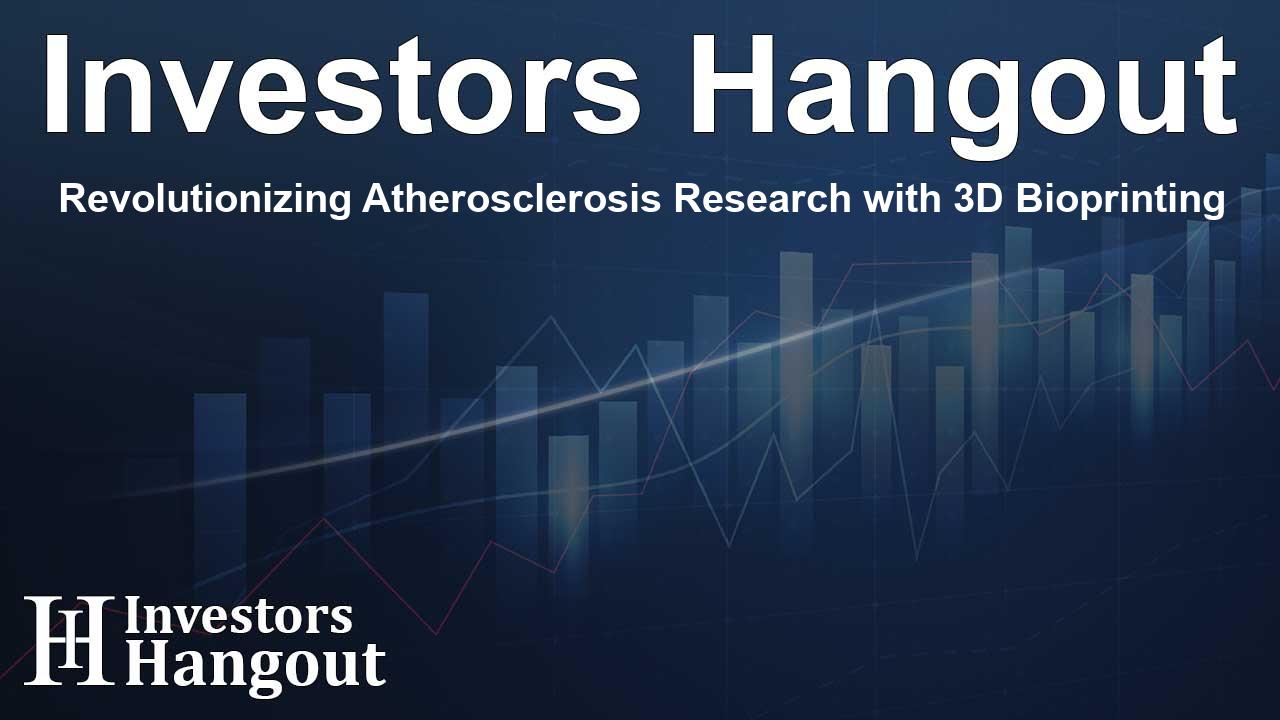Revolutionizing Atherosclerosis Research with 3D Bioprinting

Revolutionary 3D Printing in Medical Research
Innovations in 3D printing are paving the way for groundbreaking advancements in medical research. One significant area is the study of cerebrovascular diseases, including atherosclerosis and stroke. These conditions highlight critical issues such as vascular stenosis, which is the narrowing of blood vessels, impeding proper blood flow and triggering chronic inflammation. Understanding these mechanisms is crucial for developing effective treatments.
Understanding Cerebrovascular Diseases
Cerebrovascular diseases pose a significant global health challenge. They often involve the narrowing of blood vessels that disrupts blood flow, creating a cascade of health issues. Endothelial cells, which line these blood vessels, play a crucial role in sensing blood flow and responding to the mechanical forces acting on them. However, studying how these cells respond to abnormal blood flow is complex, particularly using traditional models.
The Challenge of Existing Models
Existing in vitro models often fail to replicate the full structural and functional complexity of human blood vessels. This shortcoming limits researchers' ability to study endothelial dysfunction, which is a hallmark of various cerebrovascular conditions. Thus, there has been a pressing need for more accurate models that simulate physiological conditions more effectively.
Development of 3D-Bioprinted Models
In response to this need, a research team from Pusan National University, led by Professor Byoung Soo Kim and Researcher Min-Ju Choi, has developed an advanced 3D-bioprinted model of stenotic brain blood vessels. This innovative approach leverages the capabilities of bioprinting to create structures that closely mimic the conditions found in real human blood vessels, aiming to enhance the understanding of cerebrovascular diseases.
Innovative Bioprinting Techniques
The team utilized a unique embedded coaxial bioprinting technique that enables the rapid fabrication of perfusable vascular conduits with precise control over their geometry. This process involves using a bioink formulation that combines decellularized extracellular matrix from porcine aorta, collagen, and alginate, providing both the mechanical strengths and biological properties necessary for cell function.
Research Findings and Implications
The newly developed bioprinted vessels include human endothelial cells sourced from umbilical veins and brain microvessels, exposed to flow conditions that simulate both healthy and stenotic states. This model successfully replicated in vivo blood conditions, enabling researchers to observe how the structures respond to abnormal blood flow and to evaluate inflammatory responses.
Notably, the study revealed that disturbed flow in stenotic regions led to marked increases in inflammatory markers, even as the endothelial barrier's integrity remained intact. The ability to observe these dynamics in a laboratory setting could greatly enhance our understanding of how conditions like atherosclerosis and stroke develop and progress.
Future Directions in Research
This 3D bioprinting model is a significant leap forward for research into cerebrovascular diseases. It not only presents an anatomically relevant platform for studying endothelial inflammation induced by abnormal blood flow but also opens avenues for personalized medicine. By integrating patient-derived endothelial cells and exploring co-culturing approaches, researchers could refine these models further, enhancing their accuracy and applicability.
Conclusion: A New Era in Cerebrovascular Research
The advancements in 3D bioprinting technology represent an exciting trajectory in the study of cerebrovascular diseases. This innovative model may not only help in understanding the underlying mechanisms of diseases such as stroke and atherosclerosis but can also provide a platform for testing new therapies and personalized treatment strategies efficiently. With the potential to complement or reduce the need for animal testing, this research is paving the way for more humane and accurate medical investigations.
Frequently Asked Questions
What is the significance of using 3D bioprinting in medical research?
3D bioprinting allows researchers to create models that closely mimic human tissues, providing better insights into disease mechanisms and potential treatments.
How does the new model simulate cerebrovascular diseases?
The model replicates stenotic blood vessel conditions and flow dynamics, enabling observation of endothelial responses consistent with those found in vivo.
What are the benefits of studying endothelial cells in this context?
Endothelial cells are critical for understanding blood vessel function and the inflammatory processes associated with cerebrovascular diseases.
Can this 3D printing technology reduce animal testing?
Yes, by providing a reliable platform for research, this technology can reduce reliance on animal models, supporting ethical research practices.
What advancements could further enhance this research?
Incorporating patient-specific cells and advancing technologies such as AI could refine the models, leading to better therapeutic strategies.
About The Author
Contact Logan Wright privately here. Or send an email with ATTN: Logan Wright as the subject to contact@investorshangout.com.
About Investors Hangout
Investors Hangout is a leading online stock forum for financial discussion and learning, offering a wide range of free tools and resources. It draws in traders of all levels, who exchange market knowledge, investigate trading tactics, and keep an eye on industry developments in real time. Featuring financial articles, stock message boards, quotes, charts, company profiles, and live news updates. Through cooperative learning and a wealth of informational resources, it helps users from novices creating their first portfolios to experts honing their techniques. Join Investors Hangout today: https://investorshangout.com/
The content of this article is based on factual, publicly available information and does not represent legal, financial, or investment advice. Investors Hangout does not offer financial advice, and the author is not a licensed financial advisor. Consult a qualified advisor before making any financial or investment decisions based on this article. This article should not be considered advice to purchase, sell, or hold any securities or other investments. If any of the material provided here is inaccurate, please contact us for corrections.
